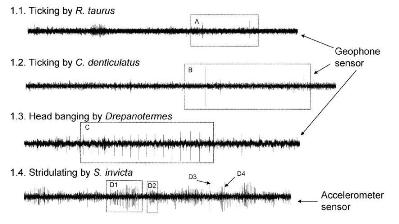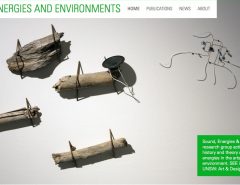Geophone Detection of Subterranean Termite and Ant Activity
R. W. MANKIN1 AND J. BENSHEMESH2
ABSTRACT
A geophone system was used to monitor activity of subterranean termites and ants in a desert environment with low vibration noise. Examples of geophone signals were recorded from a colony of Rhytidoponera taurus (Forel), a colony of Camponotus denticulatus Kirby, and a termite colony (undetermined Drepanotermes sp.) under attack by ants from a nearby C. denticulatus colony. The geophone recordings were compared with signals recorded from accelerometers in a citrus grove containing Solenopsis invicta Buren workers. Because of their small size, all of these insects produce relatively weak sounds. Several different types of insect-generated sounds were identiÞed in the geophone recordings, including high-frequency ticks produced by R. taurus and C. denticulatus, and patterned bursts of head bangs produced by Drepanotermes. The S. invicta produced bursts of ticks with three different stridulation frequencies, possibly produced by three different-sized workers. Overall, both systems performed well in enabling identiÞcation of high-frequency or patterned pulses. The geophone was more sensitive than the accelerometer to low-frequency signals, but low-frequency insect sound pulses are more difÞcult to distinguish from background noises than high-frequency pulses. The low cost of multiple-geophone systems may facilitate development of future applications for wide-area subterranean insect monitoring in quiet environments.





Leave a Reply
Lo siento, debes estar conectado para publicar un comentario.